Introduction: The Thrill and Danger of Motorcycle Travel
Motorcycling is often regarded as an exhilarating way to experience freedom on the road, providing both adventure and a unique connection to the environment. However, this sense of freedom comes with significant risks. Motorcycle riding inherently exposes riders to dangers that are less pronounced in other forms of transportation, such as cars or bicycles. This document will delve deeply into the various risks associated with motorcycle rides and travels, offering a comprehensive view of the challenges riders face, how these risks manifest, and, most importantly, how they can be mitigated.
The statistics are clear: motorcycle riders are far more likely to suffer serious injury or death in an accident compared to car drivers. According to the National Highway Traffic Safety Administration (NHTSA), motorcyclists are 28 times more likely to die in a crash per mile traveled than passenger vehicle occupants. Understanding the causes and risks is the first step in minimizing these dangers, whether on a short commute or a long-distance motorcycle journey.
1. The Types of Motorcycle Rides and Travel
Motorcycle riding can be categorized into different types, each presenting its unique set of risks. The specific risks depend on the riding environment, the rider’s experience, and the nature of the trip.
1.1 Urban Commuting

Motorcycle commuting in urban environments exposes riders to dense traffic, frequent stops, and constant interaction with other vehicles. Commuters must deal with risks such as sudden lane changes, distracted driving, and pedestrian crossings.
1.2 Long-Distance Touring

Long-distance motorcycle travel, also known as motorcycle touring, involves multi-day or even multi-week journeys. Riders face unique risks such as exhaustion, unfamiliar terrain, and limited access to emergency services in remote areas. Challenges such as weather conditions, mechanical failures, and navigation in unfamiliar regions also come into play.
1.3 Off-Road Motorcycling

Off-road motorcycling takes place on dirt roads, trails, and other unpaved paths. This type of riding increases the risk of mechanical failure and accidents due to rough terrain. Riders must also contend with obstacles such as rocks, trees, and animals, making the risk of injury higher than on paved roads.
1.4 Motorcycle Racing
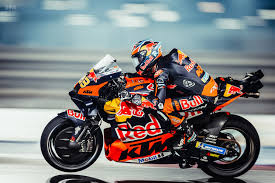
Motorcycle racing, whether on closed tracks or public roads in the case of illegal street racing, brings an entirely different level of risk. High speeds, aggressive cornering, and competitive behaviors significantly increase the likelihood of a crash, leading to severe injuries or fatalities.
2. Traffic-Related Risks
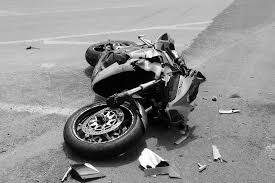
The primary risks motorcycle riders face are those associated with traffic accidents. Whether riding in city traffic or on highways, motorcyclists are vulnerable to being involved in collisions, and the severity of injuries can be catastrophic due to the lack of protective barriers like those found in cars.
2.1 Collisions with Other Vehicles
One of the most significant dangers motorcyclists face is being involved in a collision with another vehicle. Motorcyclists are much more difficult to spot than other vehicles, particularly when they are in a driver’s blind spot. Common causes of such collisions include:
- Left-turn accidents: Drivers turning left often fail to notice approaching motorcycles.
- Rear-end collisions: In stop-and-go traffic, motorcycles are more likely to be hit from behind due to their smaller profile and braking differences.
- Lane changes: Sudden lane changes by drivers not checking for motorcycles often lead to accidents.
2.2 Loss of Control
Riders may lose control of their motorcycles due to factors such as excessive speed, road conditions, or poor weather. Factors that can cause loss of control include:
- Slippery or wet roads: Rain, snow, or ice can make roads slippery, increasing the chance of skidding.
- Gravel or loose surfaces: Potholes or gravel can destabilize the bike, especially at higher speeds.
- Speeding: Riding at high speeds reduces a rider’s ability to react to sudden obstacles or changes in the road environment.
2.3 Motorcycle Blind Spots
Unlike cars, motorcycles have a much smaller profile, making them difficult for other drivers to see, especially in their blind spots. This can lead to dangerous lane changes or collisions, particularly on highways.
2.4 Tailgating and Aggressive Driving
Motorcyclists are vulnerable to tailgating by cars and trucks, especially in heavy traffic. Aggressive driving by other vehicles increases the risk of a motorcyclist being squeezed or forced off the road.
3. Environmental and Weather-Related Risks
Weather and environmental factors also present significant risks for motorcycle riders. Unlike enclosed vehicles, motorcycles offer no protection from the elements.
3.1 Rain, Snow, and Ice
Bad weather conditions such as rain, snow, or ice increase the likelihood of accidents due to slippery roads. Heavy rainfall can reduce visibility, while wet surfaces make stopping distances longer and tires more prone to slipping.
3.2 Wind
Strong winds can destabilize motorcycles, especially on open highways or in areas prone to gusts. Crosswinds or side winds can cause a rider to lose balance, leading to dangerous situations.
3.3 Temperature Extremes
Motorcycle riders are directly exposed to extreme temperatures, whether it be excessive heat or cold. Prolonged exposure to high heat can lead to heatstroke, dehydration, or exhaustion, while riding in cold weather can lead to hypothermia or frostbite, particularly on long-distance rides.
4. Motorcycle-Specific Risks and Mechanical Failures
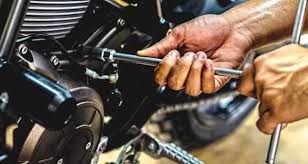
Motorcycles, like any machine, require regular maintenance to perform safely. Riders who neglect maintenance or ride poorly maintained bikes expose themselves to significant risks.
4.1 Tire Failures
A sudden tire blowout or puncture can lead to a loss of control, especially if the tire failure occurs at high speeds or in difficult conditions. Proper tire maintenance, including checking tire pressure and tread depth, is crucial.
4.2 Brake Failures
Brakes are the most critical safety system on a motorcycle. Brake failure, due to worn pads or inadequate brake fluid, can result in the inability to stop the bike, causing accidents.
4.3 Engine and Transmission Issues
Mechanical failures related to the engine or transmission, such as sudden stalling or gear problems, can be particularly dangerous at high speeds or in traffic.
4.4 Suspension and Handling Problems
Suspension issues can reduce the motorcycle’s ability to absorb shocks from rough roads, leading to instability, particularly when cornering or riding over bumps.
5. Human Factors: Rider Behavior and Preparedness
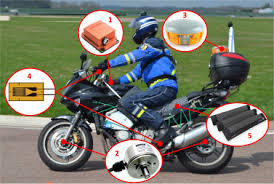
Many risks in motorcycling stem from human factors, such as rider behavior, decision-making, and preparation. Riders who fail to follow safety practices or ride beyond their skill level are more likely to be involved in accidents.
5.1 Inexperience
Inexperienced riders often struggle to manage motorcycle handling, especially in high-speed situations or during adverse weather conditions. Novice riders are also more likely to misjudge road conditions or fail to properly assess traffic situations.
5.2 Speeding and Risk-Taking
Speeding is one of the most significant risk factors for motorcycle accidents. High-speed riding reduces reaction times, increases stopping distances, and intensifies the impact of crashes. Riders who engage in reckless or aggressive behavior, such as weaving through traffic or performing stunts, face increased risks of injury.
5.3 Fatigue and Physical Condition
Long-distance motorcycle travel can be physically demanding. Fatigue, dehydration, or poor physical conditioning can impair a rider’s judgment and reaction times, increasing the risk of accidents.
5.4 Substance Use
Riding under the influence of alcohol or drugs significantly increases the risk of accidents. Alcohol impairs reaction times, decision-making, and balance, while certain drugs can affect a rider’s ability to focus and respond to unexpected situations.
6. Protective Gear: Mitigating the Risks
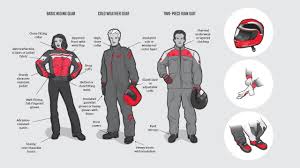
The proper protective gear can significantly reduce the severity of injuries in the event of an accident.
6.1 Helmets
A helmet is the most essential piece of safety gear for a motorcyclist. Helmets protect the head and can reduce the likelihood of fatal brain injuries in a crash. Various helmet types (full-face, open-face, modular) provide varying levels of protection.
6.2 Protective Clothing
Motorcycle jackets, pants, gloves, and boots made from leather, Kevlar, or other abrasion-resistant materials can protect riders from road rash and injuries in the event of a fall. Armored gear provides additional protection to vital areas like the shoulders, elbows, and knees.
6.3 Reflective Gear and Visibility
Visibility is crucial for motorcycle safety, especially at night or in low-light conditions. Riders should wear reflective clothing or accessories, use high-visibility helmets, and ensure their bikes are equipped with working lights and reflectors.
7. Risk Mitigation Strategies
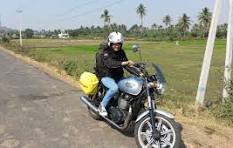
While risks are inevitable, various strategies can help mitigate them.
7.1 Rider Education and Training
Rider safety courses, such as those offered by the Motorcycle Safety Foundation (MSF), can significantly improve rider skills and decision-making abilities. These courses teach proper techniques for braking, cornering, and handling emergency situations.
7.2 Regular Maintenance and Inspections
Routine checks on the motorcycle’s condition, including the brakes, tires, engine, and suspension, are crucial. Regular maintenance helps identify potential issues before they lead to accidents.
7.3 Planning Long-Distance Rides
When embarking on long-distance motorcycle travel, proper planning is essential. Riders should plan their route, check weather conditions, ensure access to emergency services, and carry necessary supplies, including water, first-aid kits, and spare parts.
7.4 Avoiding Distractions
Riders should remain focused on the road and avoid distractions such as texting, using headphones, or getting distracted by passengers.
Conclusion: The Balance of Risk and Reward in Motorcycle Travel
Motorcycle riding is inherently risky, but with the right precautions, training, and preparation, these risks can be minimized. By understanding the potential dangers — from traffic-related incidents to environmental hazards — motorcyclists can take steps to protect themselves and enjoy the thrill of the ride more safely.
The risks associated with motorcycle travel are significant, but the rewards — including freedom, adventure, and the unique connection to the road — make it an appealing activity for many. With proper safety measures in place, the experience of motorcycle riding can be as safe as it is exciting, offering an unparalleled sense of adventure.


